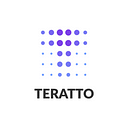Challenges of Digital Healthcare
Digital healthcare is currently receiving a lot of attention due to large-scale investment, growth potential, and continuity of medical care and health, but there are some challenges to be solved.
First, platforms, programs, equipment, wearables, and AR/VR devices are being developed through various software and hardware by country, industry, and field, but interoperability is difficult because standardization is not set. And unless it is based on programs created separately, it is difficult for us to link and use.
The lack of such standardization means that no matter how much the digital healthcare market develops and grows, it can only operate independently, and it is difficult to expect market expansion. This is because it takes a lot of time to create the big data industry through securing data in healthcare and the foundation of AI through large amounts of data. Therefore, it is necessary to solve the problem of interoperability through standardization.
Second, as personal information becomes more important, personal information laws are being strengthened in each country. In particular, most countries have enacted and managed a separate law that is stronger than personal information management in a medical information field. But according to development of digital healthcare, wearables and telemedicine platforms based on internet are always exposed to hacking risks and ransomware attacks, and as private homes using smart home care services have almost no security devices, it is a bigger problem.
To solve this problem, public-private key encryption, biometric authentication, and automatic encryption of all files and data through digital signatures are widely used, but the most important thing is to eliminate whose medical data it is through de-identification of personal information.
Third, 5G has brought a new era that is fast, uninterrupted, and connected with numerous devices in a wide area with hyper-speed, hyper low latency, and hyper-wideband technologies. Unlike other industries, the medical and healthcare fields have special expertise that deals with life and health, so safety must be ensured.
Since most of the industries in the medical field are connected with physical outcomes such as treatment, prescription, and surgery, various technologies in the digital health care field can provide a variety of help such as education, customer management, prescription delivery, and information processing, etc., but unless the stability of life and health is secured, the digital health care industry will inevitably have limitations.
Fourth, no matter how good technology and equipment are developed, it is useless if consumers do not know the information.
Currently, in the digital health care field, effective and innovative solutions and equipment are developed all over the world, and many are commercialized and used, but it is limited to some countries, institutions, companies, and universities.
For a simple example, in the case of a patient who needs only simple implant treatment, although the implant can be easily operated in about 10 minutes after drilling a hole in the gum with a fine drill. He has no choice but to undergo implant surgery by incision of the gums with long treatment period and severe pain because of unknowing this information. In addition, countries such as the United States and Europe, where medical expenses are expensive, often come to Korea for an inexpensive, fast, and accurate health checkup. This is because it is cost-benefit to travel and receive health check-ups in Korea than the cost of health check-ups in their own country. Of course, there are people who receive expensive health checkups in their own country due to language and lack of information.
Even now, it is difficult to receive surgery or procedures because they do not know this information, but it is more difficult for general consumers to access information about newly developed digital health care. Companies, hospitals, and universities that have developed new technologies only focus on selling products through global marketing, but do not market their technologies to general consumers, so consumers cannot know information about new technologies.
